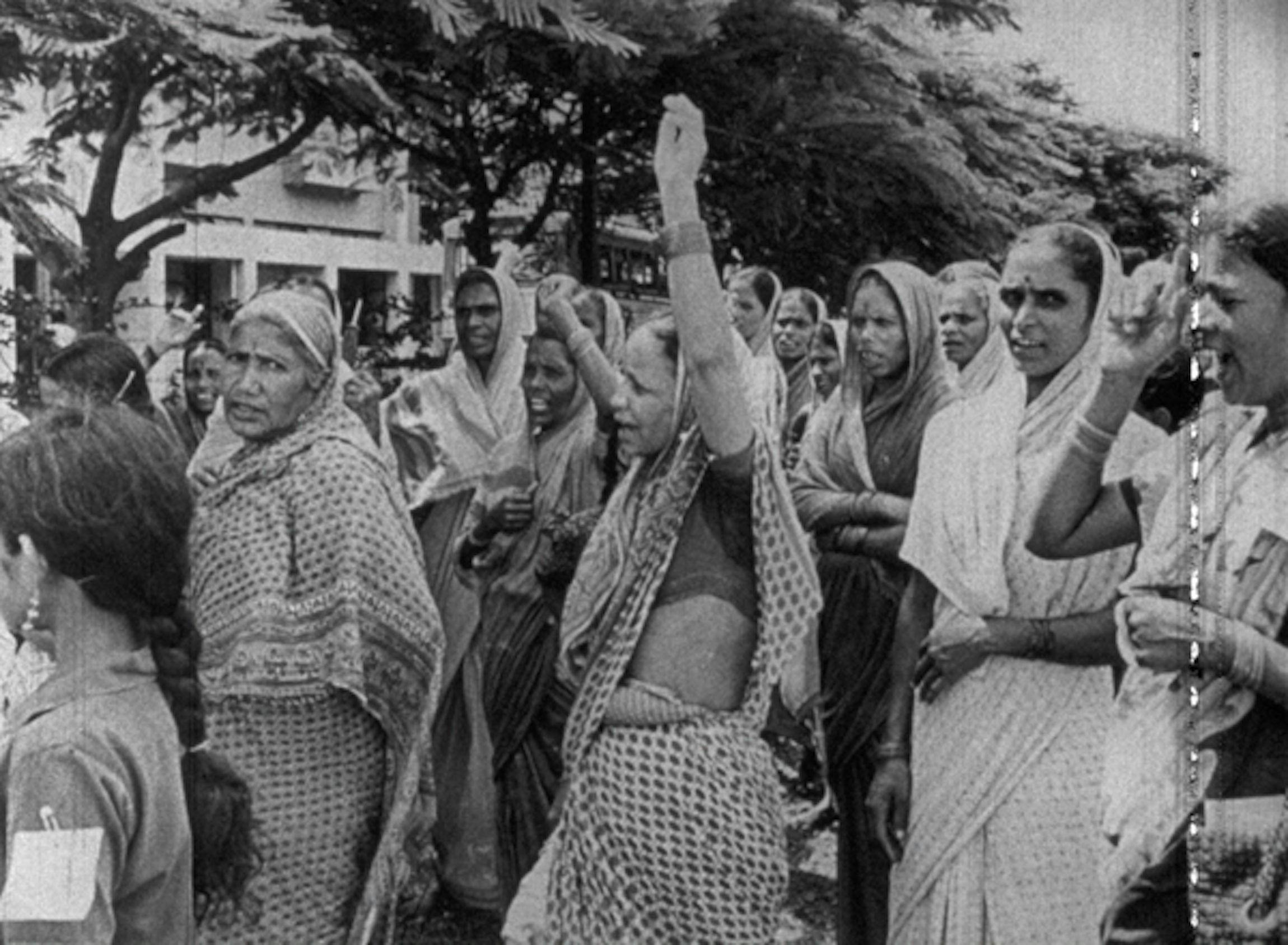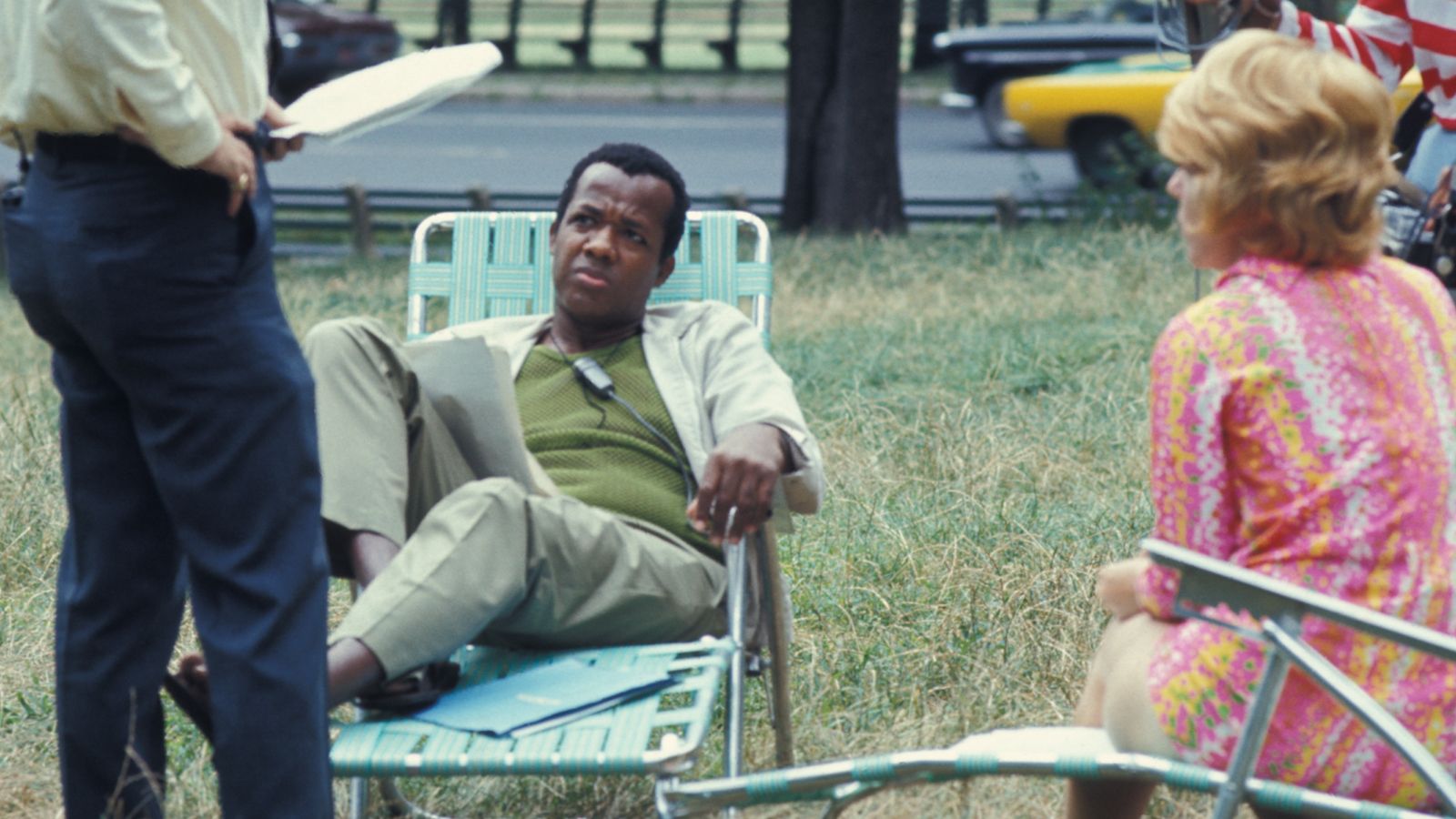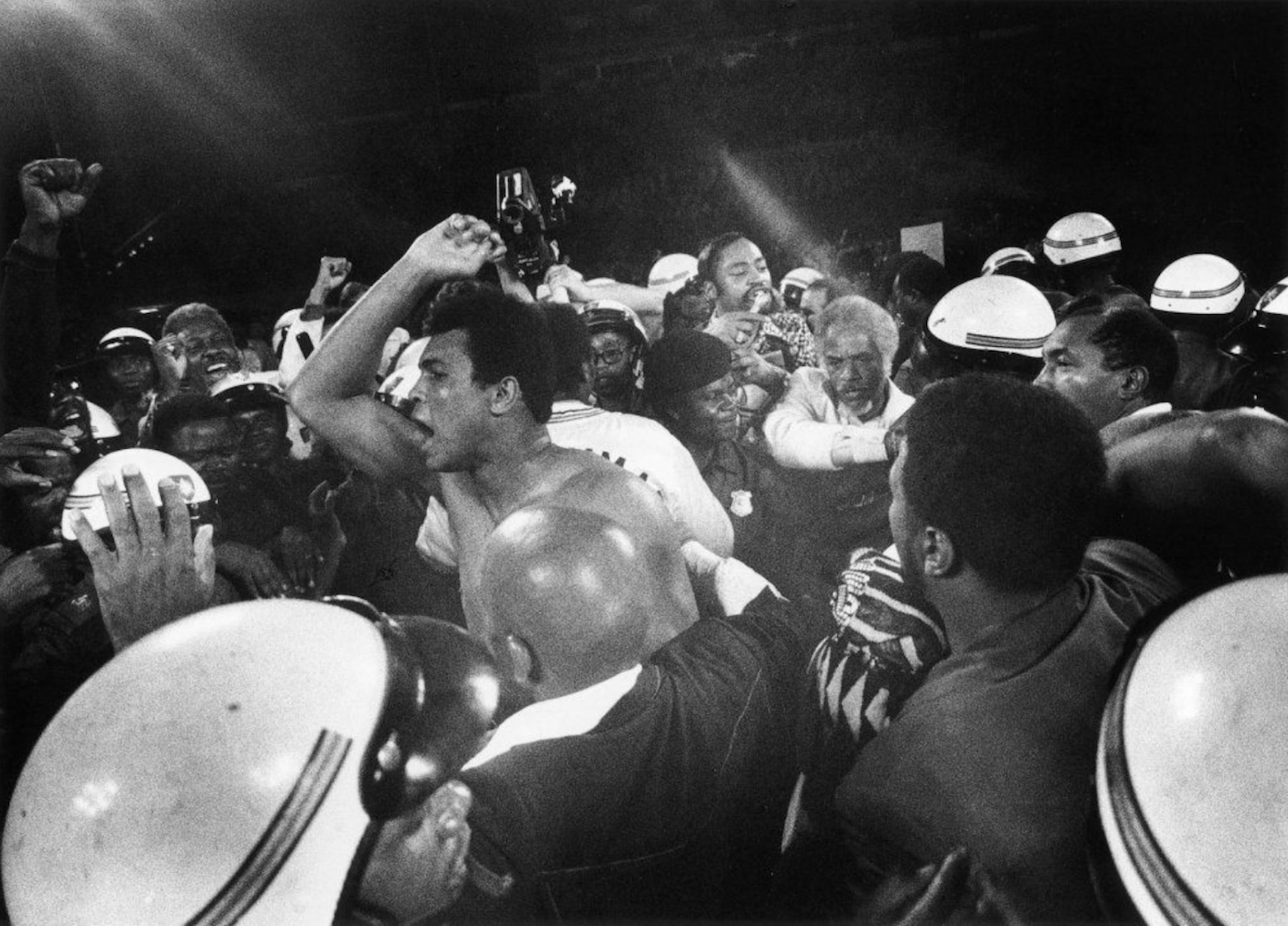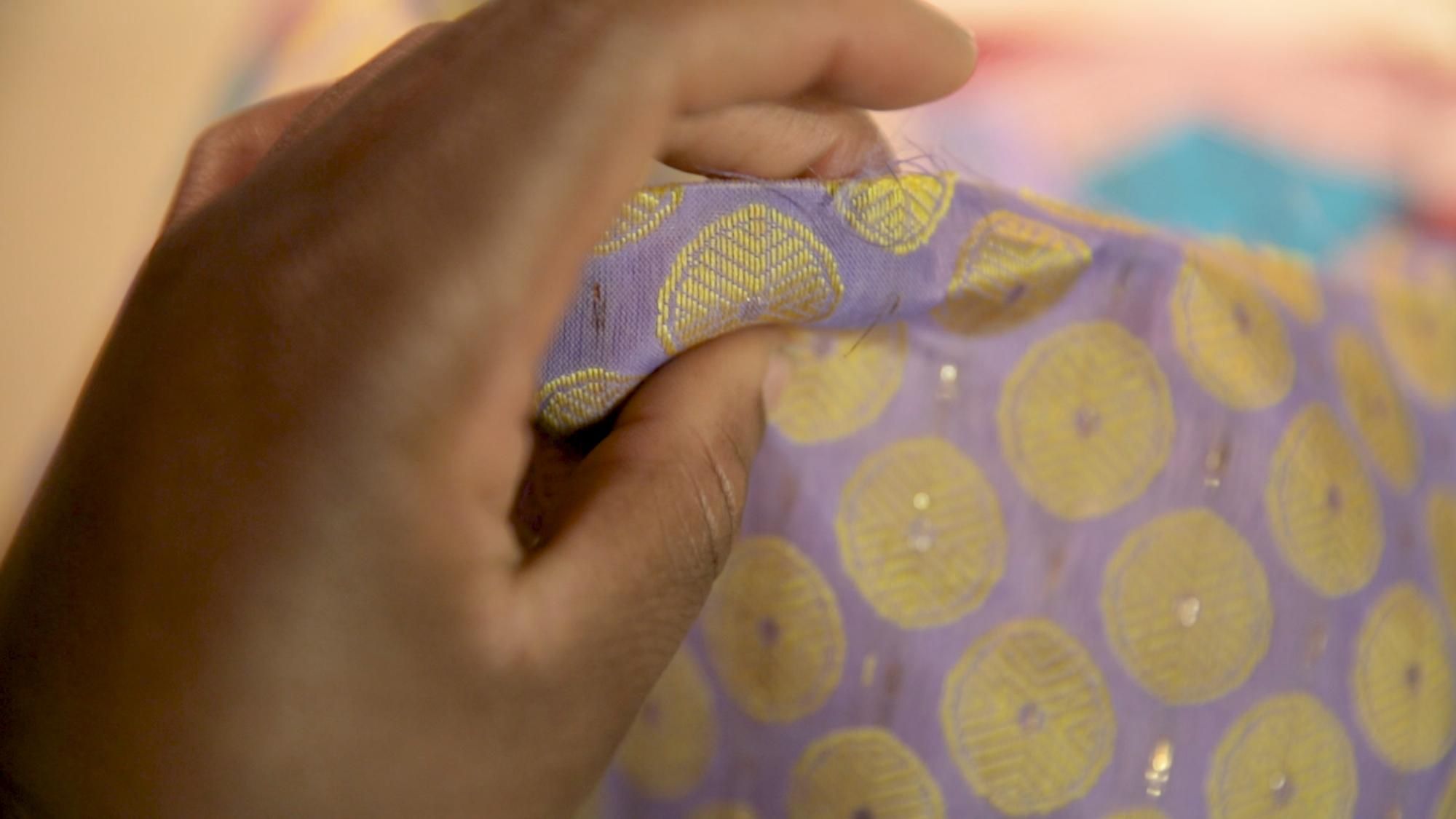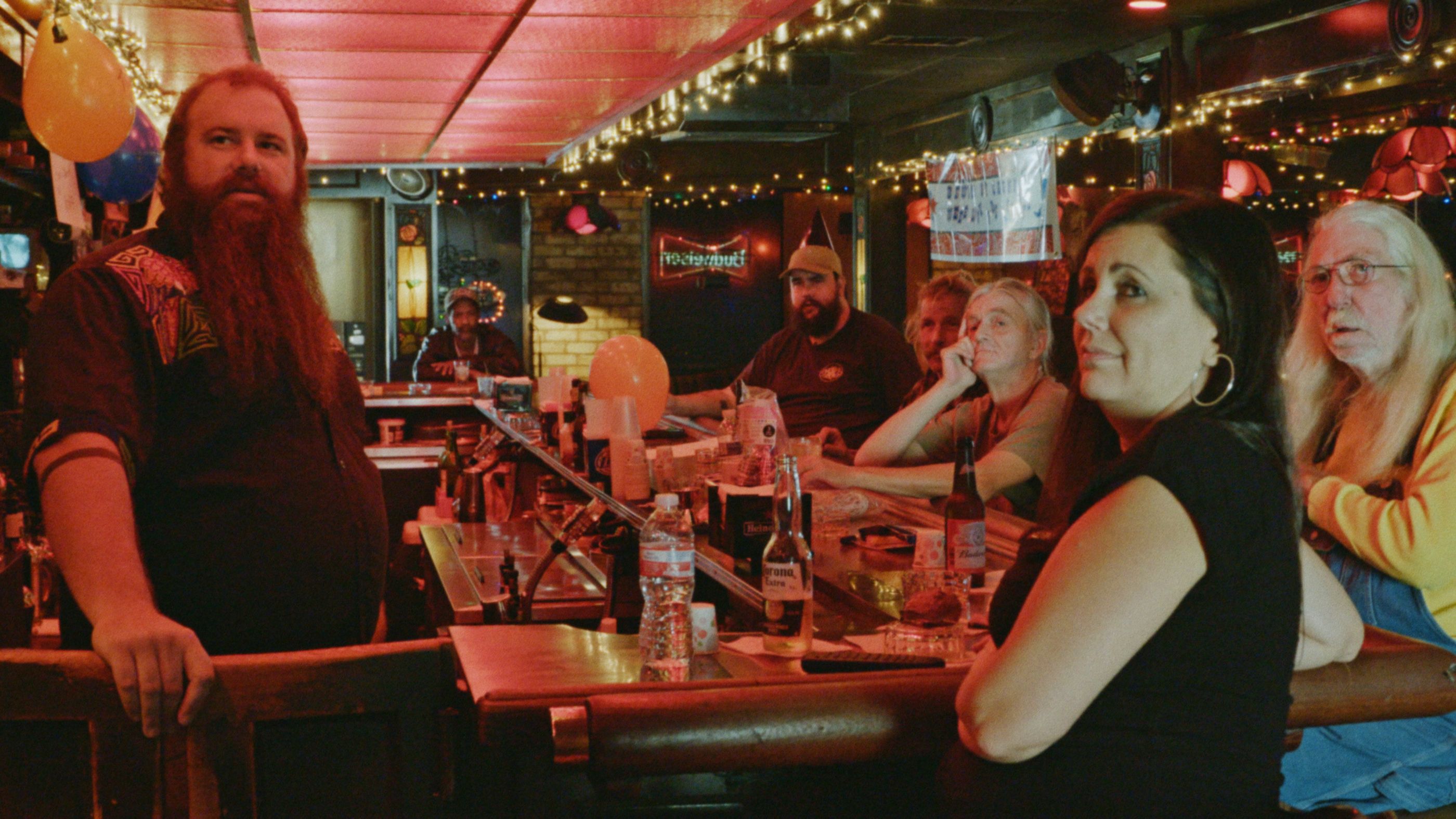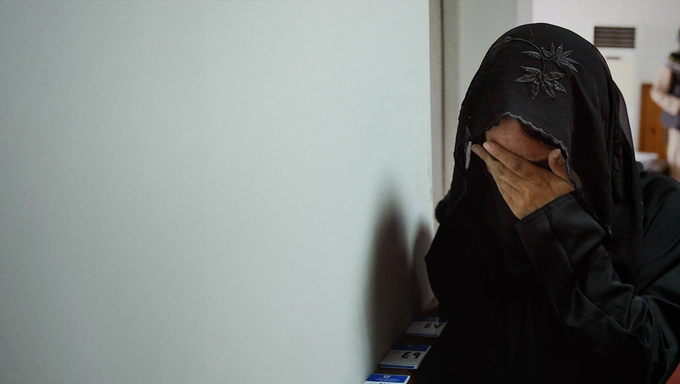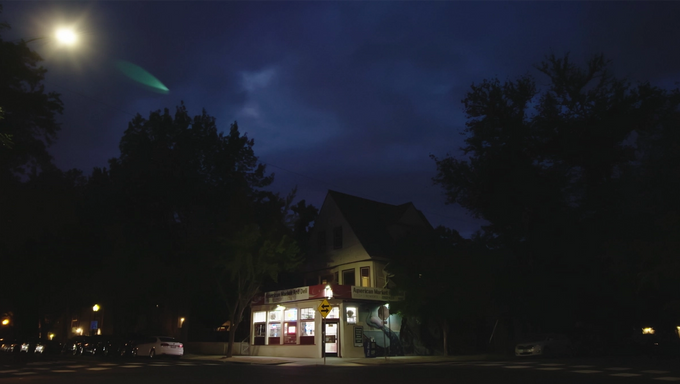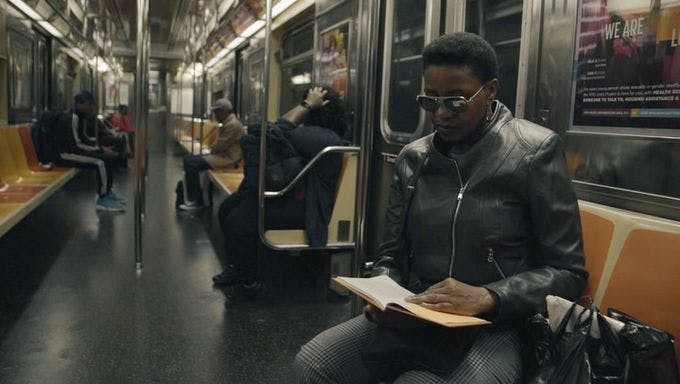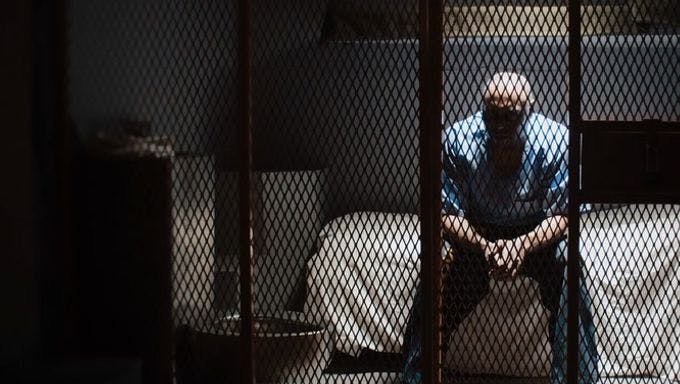Some of my most cherished discoveries in this year of pandemic-streaming have been the newly restored works of the Yugantar Film Collective, which I encountered in March in the Arsenal—Institute for Film and Video Art’s “arsenal 3” public access virtual cinema. An Indian filmmaking collective formed by documentarian Deepa Dhanraj, cinematographer Navroze Contractor, activist Abha Bhaiya, and writer Meera Rao, the group emerged in 1980 out of a transformative moment in Indian political history.
The Emergency imposed in 1975 by Prime Minister Indira Gandhi had ended in 1977 after 21 scarring months of censorship, political persecution, mass sterilization, and other restrictions of civil liberties. In its aftermath, the women’s movement had emerged in full swing in the country, with young women taking to the streets to protest and organize around issues of labor, caste, economy, domestic violence, rape, and more. Inspired by these radical stirrings, Yugantar set out to make a series of films on the theme of “women and work” in collaboration with grassroots women’s groups.
Between 1980 and 1983, the collective made four films with the help of a German grant. Three were restored by Arsenal in 2019. The first, Molkarin [“Maid Servant,” 1981], depicts the efforts by which domestic workers in the city of Pune formed a union. The second, Tambaku Chaakila Oob Ali [“Tobacco Embers,” 1982], recreates a strike led by tobacco factory workers in the town of Nipani in Karnataka to demand better wages and working conditions. And the third, Idhi Katha Matramena? [“Is This Just a Story?,” 1983], offers a fictionalized account of a middle-class woman led to suicide by the pressures and alienation of married life.
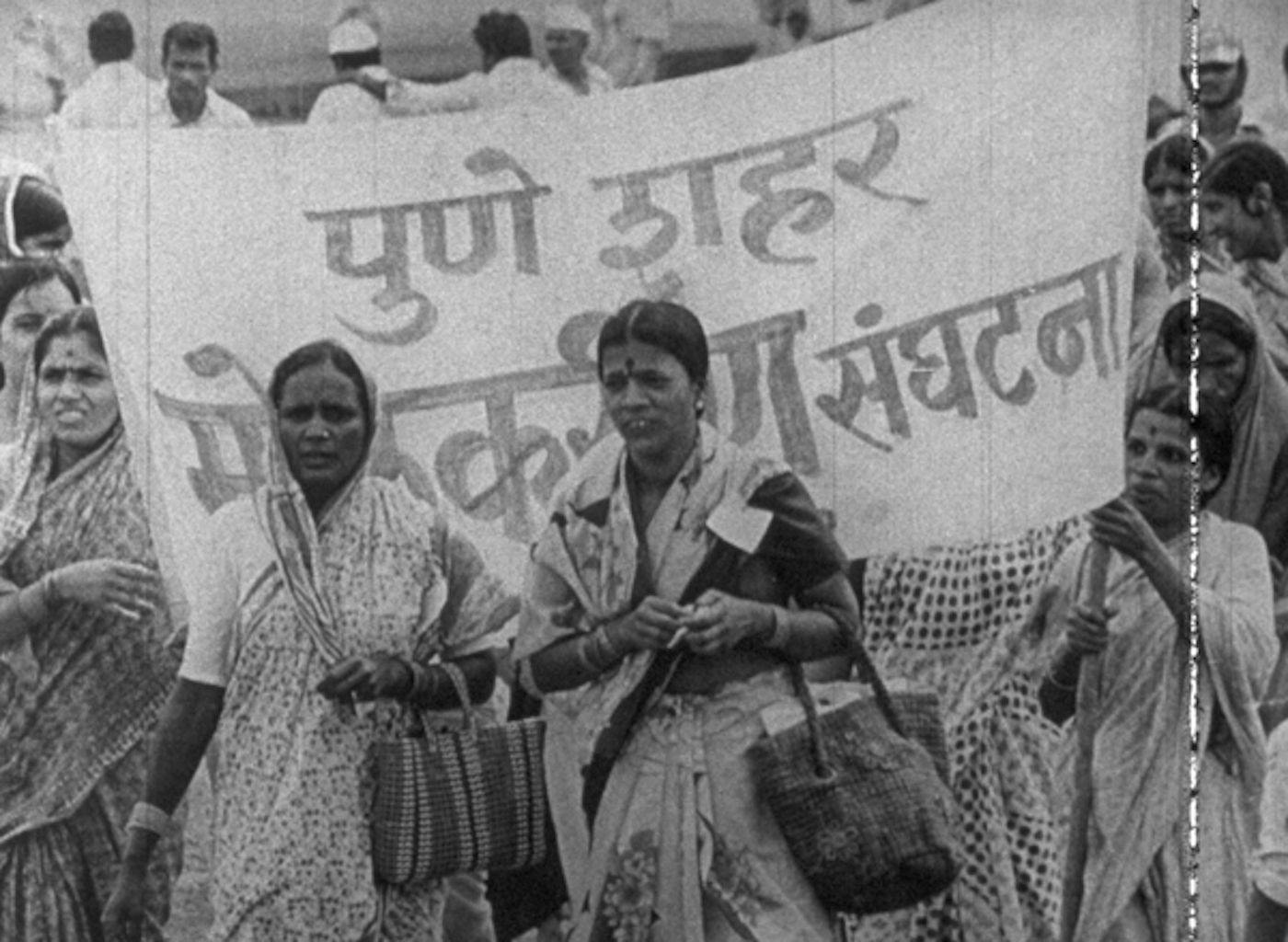
Shot on 16mm, black-and-white stock, these slender, half-hour films combine lucid and didactic structures with a rich discursive element. Through staged or vérité scenes, each film captures a distinct process: the phases of union formation; the negotiations involved in striking; the gradual erosion of women’s autonomy in the family. But what gives the films their charge is the focus on the radical potentialities of women’s sociality. Women talk freely and raucously in these films, discussing their work and home lives with both humor and pathos, and using their lived experiences to arrive at complex theoretical and strategic positions. Politics, pedagogy, and pleasure collide in their conversations.
The films feel like both capsules from the past and blueprints for filmmaking and organizing in the present. They’re incredible snapshots of place-times, capturing microhistories—particularly of working-class women’s labor struggles—that are often omitted in official narratives. But all three films also feel far ahead of their time—and even today’s time—in their deployment of a genuinely co-creative and intersectional filmmaking practice, wherein the scripts and scenarios were conceived collectively with the workers and groups involved.
Yugantar disbanded in 1983 when the money ran out, and the prints languished in poor condition for many years until they were restored as part of a research project undertaken by the academic and curator Nicole Wolf for Arsenal’s “Living Archive—Archive Work as a Contemporary Artistic and Curatorial Practice” program. The restorations were supervised by Dhanraj, who has remained a significant presence in Indian and feminist documentary in the last four decades, with a robust oeuvre of acclaimed solo films including Kya Hua Is Shahar Ko?[ “What Has Happened To This City?,” 1986] Something Like a War (1991), and Invoking Justice (2011).
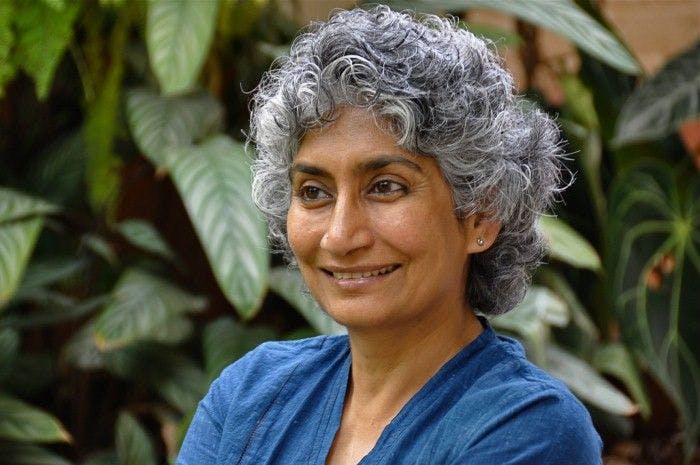
On a Sunday morning in December, I chatted with Dhanraj over Zoom about the origins of Yugantar, the group’s uniquely collaborative process of making and circulating the films, and her experience with restoring and resurrecting these long-lost works.
My understanding is that these films had not been available to view for a long time before the Arsenal restoration. How did the restorations come about?
It all started because Nicole [Wolf] had been visiting India, and she had an interest in Indian documentary. It was for her MPhil project, and she was interviewing various filmmakers. So we met and started talking about the Yugantar films, and she said, “Can I see them?” And I said, “Well, you can’t.” Because we made these films between 1980 and 1983. And at that time, digitizing films wasn’t an option. We were left with the physical 16mm prints. And because we had screened them so often, and there was no money to make new ones, they were in terrible shape. Literally, like you say in Hindi, machar dani [mosquito nets]. It was like that, with scratches and stuff. So I could only talk about the films, I could not show them, and Nicole got very intrigued. People she spoke to everywhere referred to all these films, but they didn’t seem to exist, you couldn’t screen them. They were like ghosts.
I owe this [restoration] to Nicole, because when the money became available at Arsenal, she said, “Why don’t we restore the films?” Then we began searching for the negatives.
Where were they? Were you just storing them personally?
Personally, yes, we were storing the prints at home. We didn’t have the resources to keep them in a lab or a protected environment, so in some cases there was so much physical damage... I remember the horror when I took the cans to Arsenal for the first time, in Berlin. If you go into their archive area—it’s spotless. You can practically do surgery on their floors. And I opened this can and the acid smell! They recoiled in shock. Then they had to put it on the Steenbeck [editing table] and play a little bit to see what it was. You could see the guy just wincing, like, “How the hell am I going to clean my equipment after this?” The minute we got the film off, he dashed in there with alcohol and started cleaning it [Laughs].
How has it been for you to reinject the films into public conversation all these years later?
Thinking about archiving, and what the film becomes after restoration—these are really fascinating discussions, because you want to use modern technology and clean up as much as you can. I had all these fantasies about how I can re-edit the films, how I can change some things. It’s like revising one’s history, and of course, you can’t. Because it belongs to a set moment in time.
Before the Yugantar films, Arsenal had restored my film Kya Hua Is Shahar Ko?, which had also been a lost film. There were scratch marks even on the negatives. At one point, we were filming a riot, and some men threw a very compact ball of vermilion—they had made it like a little rock, like a missile—straight at the lens. Navroze [Contractor] didn’t stop shooting, and [in the film, you can see that] the camera goes down and comes up. I’ve kept that in the edit. The vermilion entered the lens and the magazines, there were scratches, and we kept it all in. But when it came to the restoration, I kept telling the technician, maybe we can just remove that. There was this whole conversation with Markus [Ruff], the main archivist. He kept saying, “We really have to talk about this, because these are traces of time. Do we leave them in?” These are material questions, but they’re also theoretical questions.
So after Kya Hua Is Shahar Ko? was done, we started on the Yugantar films. Only in the case of Tambaku did we have the original sound. When we made these films, we dubbed them in four languages: Hindi, Telugu, Kannada, and Marathi. So the print that was in the best condition was restored, but tragically, in the case of Idhi Katha Matramena? and Molkarin, it was not the original language that the film was shot in. But at least now the films exist.
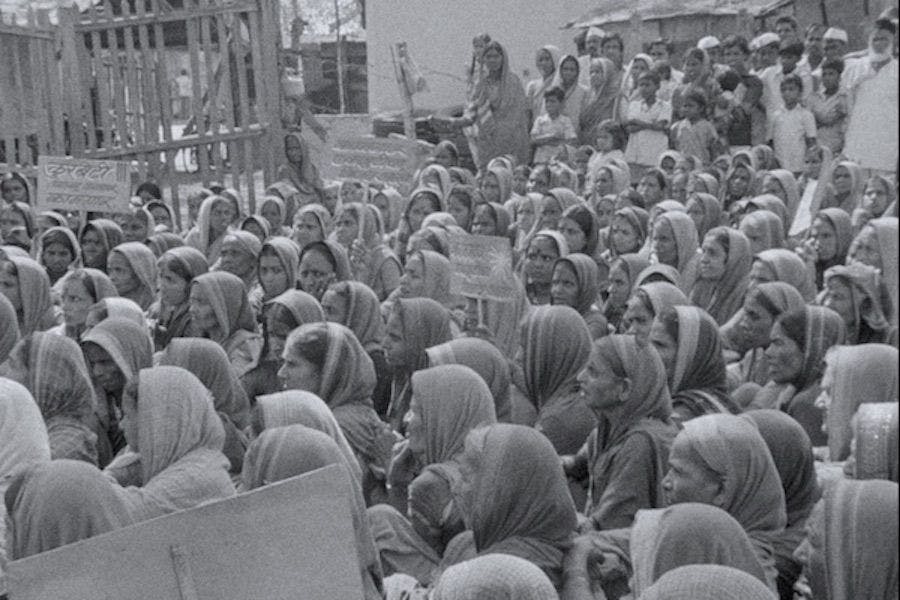
We did a very interesting experiment during the restoration process. Nicole came to Bangalore and we had a screening of Tambaku. It was terrible because we screened it on a little laptop. It hadn’t been fully restored yet, and we had members of four unions: sex workers, sanitation workers, domestic workers, and garment workers. That’s 15 to 20 people sitting around one laptop screen. And both Nicole and I were just shocked, because they were completely engaged. Even after all this time. I remember one person saying, “Just do a Kannada version and give it to us, because this is old school. This is like a manual on how to form a union. We can still use it.” That made me feel that the restoration has meaning. Because we archive it, and then what? It’s not just a museum piece, not just an artifact. Can we still make meaning with it now? It was reassuring to see that it still spoke to people and to unions.
I mean, the farmers’ unions are protesting right now in India.
Right now. It’s unbelievable what’s going on, actually.
Let’s go back to the beginning. I’m curious about the political moment in which you took up filmmaking. That was an interesting time in India: the late ’70s, early ’80s, post-Emergency and pre-liberalization. You started out by assisting filmmakers like M.S. Sathyu and Pattabhi Rama Reddy, but you’ve said that your filmmaking really emerged from your engagement with certain political questions.
I studied journalism at Osmania University in Hyderabad in the early 1970s, where you could still feel the impact of the first movements for a separate Telangana state. There was so much student politics going on. You had the Progressive Democratic Students Union, which was a CPI (ML) [Communist Party of India (Marxist-Leninist)] students group, the Radical Students’ Union, the Progressive Organization of Women. There were study circles, speeches, and debates, not only about issues related to students, like scholarships and the language of instruction, but also about anti-imperialism and tribal uprisings. It was the first time I was hearing about bonded labor, caste-related violence, sexual violence against women. Then, by the time I left university in the mid-’70s, the Emergency was declared. That was a time when, on a daily basis, you’re looking at people [being placed] under preventive detention, phones being tapped, police surveillance. So many students were picked up, taken into forests, and shot. When you begin to work in this context, the way you start looking at the state, institutions, the criminal justice system… it just marks you forever. You cannot remain untouched.
At that time, I was working as an assistant to Pattabhi Rama Reddy in Bangalore. His and his wife [the theater actress and activist] Snehalata Reddy’s house was like a salon. It was full of poets, writers, theater people. There were Lohiaites, Trotskyites, Gandhians… people of every political dispensation, who would come there every evening to debate the state of the nation. Then Snehalata was implicated in the Baroda dynamite case [criminal proceedings launched by then–Prime Minister Indira Gandhi against the socialist labor leader George Fernandes and other political activists for conspiracy to blow up government establishments] and imprisoned. We were struggling for her parole, trying to visit her in prison regularly. She was in solitary confinement, and even getting medicines to her for her chronic asthma would be at the petty whim of the warden. Sometimes she’d have to go without a visit for two weeks. [Ed note: Snehalata was eventually released on parole in January 1977, after more than eight months of imprisonment. She died five days later due to a heart attack.]
Then the Emergency ended and Indira Gandhi declared elections. That was an electric moment because we all had thought that it would last forever. Young people all over started campaigning, and you could feel this readiness, that something could change. At that time, a lot of young women were in public life, out on the streets. They were part of leftist unions, civil liberties groups that were looking into the abuses [committed during the Emergency], groups involved in campaigning against inflation. A lot of women came together around these issues, which started as informal meetings and then cohered into campaigns and actions. There were academics as well as activists, both feeding into each other’s work. It was a very lively, very energetic atmosphere. Part of these movements is just the pleasure of being together with other women. It’s like an alternate family. It’s so heady to speak, to talk, to figure things out together. That was the atmosphere post-Emergency, and we were all in the middle of it.
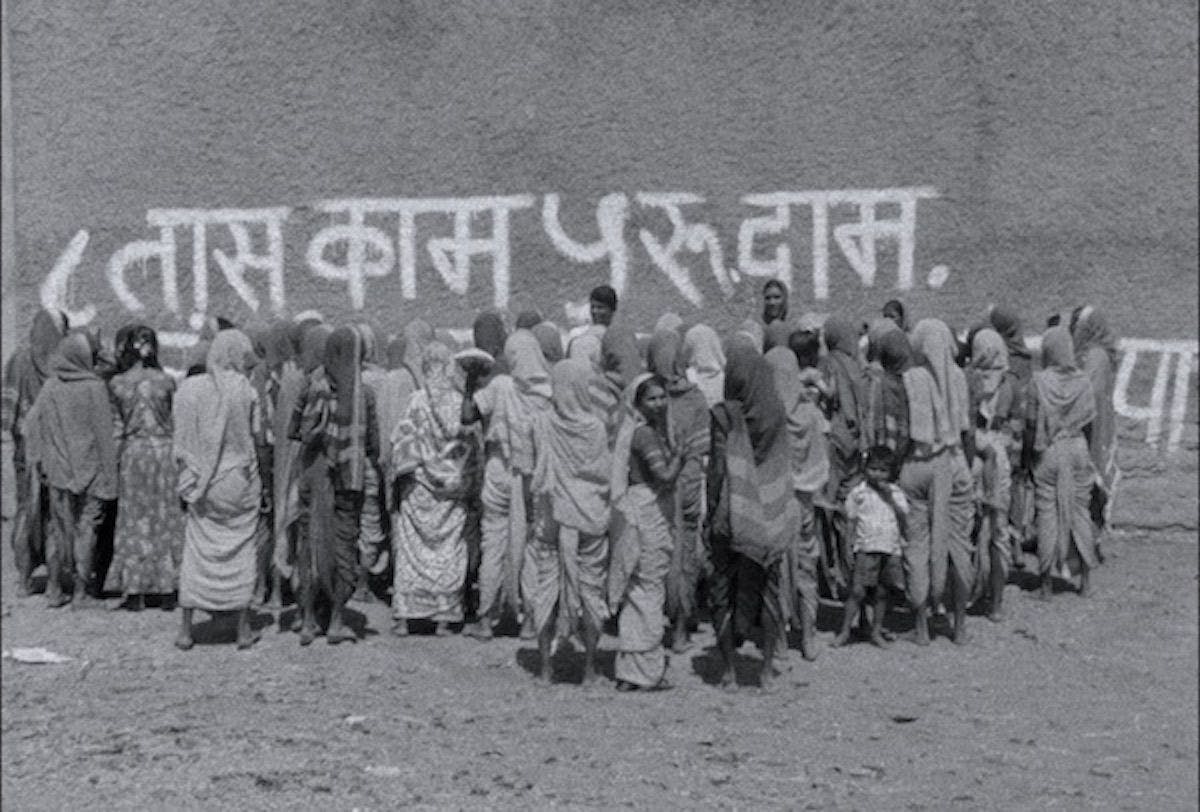
Until then, I had no clue about documentary. But the impetus to make documentaries came from how energizing our meetings were with women. How do you communicate what they were doing, whether it was in a union context or a campaign context? How do we tell these stories where women, particularly in the informal sector of the economy, had actually made a difference? The only way was to film a documentary. That’s how we came to make Molkarin, which is about a domestic workers’ union, and Tambaku, which is about a tobacco workers’ union. Of course, it was all completely foolhardy, because in this collective that we put together, Navroze was the only person well-versed in film. He had been to the Film and Television Institute of India, and was a trained photographer and cinematographer. Whereas Abha was an activist; Meera was a writer; and I had just assisted on feature films.
What was it that made you feel that film could be politically powerful?
It was just the excitement that one experienced while being in the presence of other women, and the idea that if this could be shown visually, if women could see other working women using collective action to negotiate with their employers, that they would—you can call it naive now—but essentially that they would feel the same radical potential. All the Yugantar films were very clearly made to be circulated right back into the community.
Transmission was the goal.
Yes. If today they can call it a manual for how to make a union, that’s really true. We did have that pedagogic orientation. It was built into how we told the story. And in our mind these were stories of success, because women had managed to start negotiations with employers, they had raised the minimum wage, even working conditions had improved. We saw all this as very politically empowering. For example, the strike in the Tambaku film involved 3500 women in the tobacco industry. In Karnataka, at that time, the minimum wage per day for tobacco workers was so low. They were only asking for it to be raised to Rs. 7.04. It was finally fixed at Rs. 5, but this took such a big struggle. But when you look at the number of tobacco workers in the state, which runs into millions, it was a huge victory. Even the sexual violence that they faced, calling a halt to that was very significant. So our intention was: can this start a conversation? What it takes for women to unionize?
I remember showing the film to pavement dwellers in Bombay, in very small community centers, places like that. And very often, women were just thunderstruck: “She’s like me, how can she say these things? How can they do these things? Is it possible?”
You just went around to all these places with the projection equipment?
Yeah, with huge 16mm reels, a 16mm projector, and the sound box. You had to climb onto the roofs of buses because they wouldn’t let you keep the equipment inside. We contacted trade unions, groups working with pavement dwellers on questions of housing, etc. And there would be Q&As and long discussions after the screening. It wasn’t just making the film. The distribution of the prints and getting them out there, that was a massive job. I shudder when I think about it.
Did you try to distribute them theatrically?
No, just community screenings, unions, sometimes colleges. There were women’s groups who were working with construction workers, sex workers, etc., that would use them. People keep talking about broadcasting in India, but we are “narrowcasting” champions. It’s a remarkably vibrant space in India, because we’ve been doing it for years.

But you still had to get a censor certificate, right? Even for those screenings?
Of course. Because raw film stock was imported, and the lab wouldn’t clear your negative unless you produced a certificate. And you couldn’t get a print out of the lab, either, till they got the certificate. It was another way of surveillance and control. Now, digital technology has released you from this, but still, if you want to do a public screening in India, you need a certificate. And political filmmakers always get one, because it is a form of protection if the police try to stop the screening.
Coming back to the films—were there any models of filmmaking that you were consciously working against or within? You seem to be borrowing from the colonial and statist model of didactic documentary, but also subverting it, in how your subjects are positioned.
One of the things that struck us at the time was that you really didn’t have women, particularly working class women, speaking in documentaries. That was something we wanted to put in there. In Molkarin, you’ll see that at the end, there is a take of almost three and a half minutes. And you see what it is like to be in a room with 30 women who all want to be heard, who are arguing over each other, speaking over each other. How do you convey this moment? Not just their speech, but their physical presence, their passionate engagement?
Now let me say something. I think we were really clueless, okay? We weren’t saying we have to mimic this form or that form. It was so free. Like in Tambaku, can you imagine: we reconstructed the strike fictionally, with the women who were involved playing themselves, but we shot it vérité [style]. How weird is that? It was just like that, crazy and free. “Let’s try that. Why not? Let’s try this. Why not?”
I watched the three films in chronological order, and it was interesting to see a kind of movement. You go from a more plain, vérité approach in Molkarin, to bits of aestheticization in Tambaku, to Idhi Katha, which is fictional and very ironic. How did that trajectory come about?
It was all part of the process. Molkarin was our toughest film, because it was all new, and we had to go through the union leaders, who were men. There was a lot of suspicion, like, “Who are these people and what do they want to do?” A lot went into building trust with the leaders of the group before they let us film. So I wouldn’t remove aesthetics as separate from the entire process, because in the first film we were just feeling our way into [the question of] how do we work with these women? But with Tambaku, we decided, “Look, we should just go and stay there for two months.” So Abha and I took a room, and we stayed in the slum where most of the women worked and lived. The women would come and go, they’d sit, they’d chat, we’d walk into their homes.
Because we spent 2-3 months just listening and being there, the women grew comfortable with us. That’s when I felt the collective expanding beyond the three or four of us and becoming a very collaborative process, where we sat with women and said, “Okay, we hear the stories of what happened during this strike. What do you want this film to be?” And they would actually dictate what we had to have in the film. That huge recreated strike scene is something they wanted. I kept saying, “How are we going to do this?” But they gave it to us. I’d say, “How will we feed so many people?” They’d say, “We’ll bring bhakri, we’ll get the fire engine.” So the aesthetics also evolved from these conversations. It was co-scripted, in a sense. How else would we know what to show?
Even for the narration, we had made audio recordings of our conversations with the women. Then, based on those, we would write the script, and there would be 20 women sitting with us. And they’d say, “No, that sounds very bad. That’s not the way to say it. You should say it like this.” We also took the rough cut back for them to see, before we finalized the edit.
But I’m sure consensus was not possible at every stage?
When we took the rough cut back, that was the critical moment, right? 300 women came to watch it. We actually showed it in a local theater, which was owned by a doctor. We had to wait till 11:00 pm, till the day’s show was over, and then put our film on. We showed it three times and we had discussions afterwards. And at that stage, there was very little they wanted changed. The only thing was that they hadn’t understood what we’d been doing until they saw the film. It’s not like digital today, where you can replay the shot and show it. So they were like, “Is this really a film? Film is fictional, is this a film?”
So we were very careful and particular. The only regret I have is that our own political understanding in relation to things like caste and sexual violence was limited at the time. Though we’d heard these stories, we didn’t put them in. For example, there was a woman who would regularly be beaten by her husband. And she would tolerate this domestic violence so that he’d let her participate politically outside. She did that negotiation. And there was a protest where she hung onto an inspector’s mustache. Can you imagine? She held onto his mustache and took her feet off the ground. So of course she was beaten black and blue, they broke her arm. But she just went to the hospital, covered it up, and didn’t say a word at home because she wanted to go back the next day to the strike.
Oh, wow.
There were so many of these stories which we could have gone into. What kind of patriarchal controls do women have to negotiate, like with family, to be outside, to participate politically?
So you knew about these other elements but weren’t sure how to put them in the film? Or did you only subsequently figure out that all these stories were bubbling under your story?
I think at the time we had heard them, but given that the structure of our film had to do with the history of how the women came together as a union, we struggled with these personal stories of what the family meant. But we took it into the next film, Idhi Katha. That was focused on how you look at the family as an institution. So each film led us to the next idea of what we might explore.
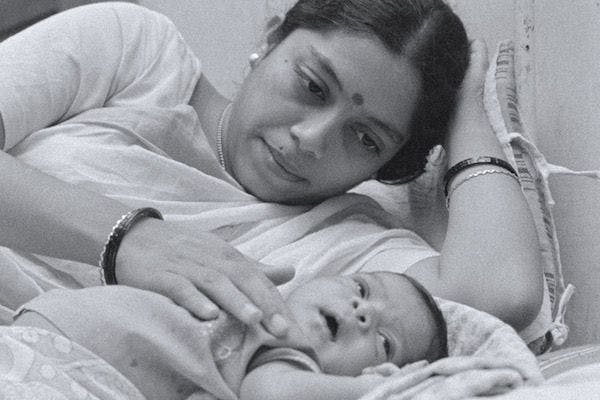
All three films involve a mixture of actuality and fiction—or perhaps reenactment—to varying degrees. It seems that some of those decisions came from the women you were working with, but what did this collision of modes produce for you?
The idea of relating a history through an individual interview, or just through the voice, didn’t seem like it would work. And the things these women did just fired our imaginations. What it meant to have 3,500 women [tobacco] workers sitting out in protest, day and night, [with] their husbands actually serving them. What it meant to have these women, who were mostly Dalit women, or Devadasi women, take on the powers visually and physically. We felt that we should somehow show it. And I never went to film school, so I had no formal anxieties about trespassing different forms.
Tell me about Idhi Katha, and the switch to a purely fictional mode.
We originally wanted to look at dowry-motivated murders and suicides of young women between 18 and 24. You can’t imagine, in the 1980s, the numbers. The burn wards were full. It was a horrible time. I can’t explain to you how women were being killed. It was a big part of what the women’s movement was engaging with back then. So we started our research and began working with the women’s group Stree Shakti Sanghatana in Hyderabad. That was an interesting experience. The group’s members were from all kinds of political formations—there were academics, women from leftist groups, civil liberties groups, student movements. And we all started talking about family, violence, women’s status, marriage as an institution. It became a consciousness-raising session, because women started talking about their own childhoods, what they’d experienced in adolescence, child abuse, sexual abuse. It was very intense.
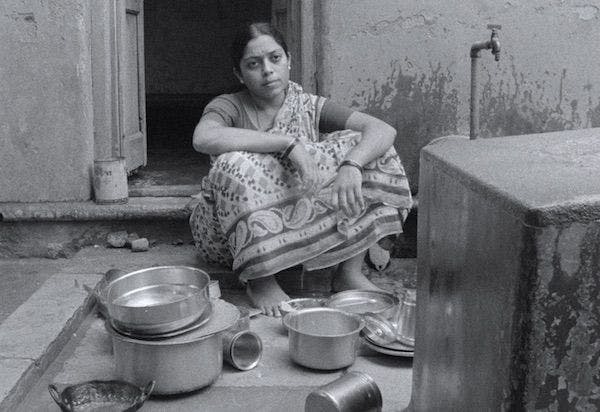
So how do you distill that [into film]? We felt we couldn’t do it as a documentary. So let’s try fiction. And again, the script was written together with the group. The guy who played the husband in the film was a theater performer, and he kept saying, “Are men really like that? He’s a cardboard character.” But I can’t explain it except to say that we had tapped into some incredible rage in those group discussions, and that had leaked into the script. The characters and dialogues came out of the experiences shared by all the women.
The lead actress, Lalita K.—was she a professional?
No, she, her friends in the film, they were all from Stree Shakti Sanghatana. And it was amazing, because we had the members of the group on the other side of the camera with us. They were there for the entire shoot, watching while we were filming and also giving advice.
I think the most radical idea in that film is female friendship. That you can live a life in female friendship. These concepts, which were very theoretical and discussed threadbare in the group—how do you translate them into a form, a theater form? That was the challenge. But I’m happy to say that it is a hit film. I cannot tell you the number of screenings where women weep while watching it. They talk about loneliness, they talk about feeling unloved. All kinds of stuff comes pouring out. That’s what I meant about the unconscious energy that had come out of the discussion group and into the script.
And did that signal something to you that you took forward? The idea that this emotive connection produces strong reactions?
See, after that, I never did fiction again. But I think what stayed—and you can see it in Invoking Justice, you can see it in Something Like a War—is that there is an amazing outcome when women get together and speak fearlessly. It somehow breaches that wall of the private realm. There is a charge in that.
Speech is really important in your films. Voiceover is constructed carefully from your subjects’ testimonies, and many of the films have talking head–style figures, but not in the conventional sense. The women are positioned as experts, but in their own lives.
I really feel that in India, we tell stories. Whenever I watch Western documentaries, I’m really fascinated, because I think, “Look at these people: they’re so self-conscious about the way they speak about their inner worlds and how they’re feeling and what they’ve experienced.” In India, in my 40+ years of talking to people on camera, whenever I’ve asked them, “How are you feeling?”, it’s a dud question. It sinks like a stone. But if I say, “What were you doing that day? What happened?” Oh my god, it’s a fantastic story. They tell me what the weather was like, what they were wearing, what they ate, what the neighbor said, what smell was coming up, the whole thing.
I have to fall in love with the people I film. I have to communicate the joy I have of being in their presence, the richness of their voices. Look how women theorize their lives [in the films]. It’s just fantastic.
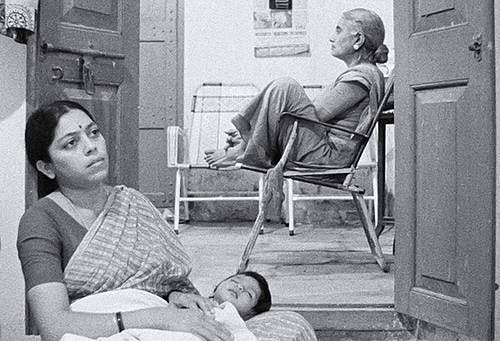
Did you think of what you were doing with Yugantar as “women’s filmmaking,” in the sense of the term that was emerging in the world at that time?
I don’t think so. The ideas of what is the women’s film or what is a feminist gaze came up later. I self-identify as a feminist. It’s in my DNA. But the way one comes into political subjecthood is complex. The films were definitely feminist in terms of how we were placing women and the life-worlds we were presenting. For example, in Molkarin, you have domestic workers speaking about how their labor frees up their employers’ time and allows upper- and middle-class women to waltz off and make money, while they can’t even ask for a raise of two or three rupees. I remember that when we showed the film to local middle-class women, they got very angry, like, “How dare they speak like this?” What these workers are articulating is really a feminist theory of labor, of reproductive labor.
And I definitely think our practice was very inclusive, and we really struggled with developing it. That is important to me. I don’t know what people mean when they say “women’s filmmaking.” But how do you construct that practice, especially in documentary, when you’re working with women? To me, that’s a test, to work something out there.
Looking back at the Yugantar films now, what strikes you as relevant even today? And what feels like it doesn't work anymore?
What is still relevant is the intensely collaborative film practice that evolved over the three years that we made the Yugantar films. A process where workers and filmmakers could struggle together to build political trust. To create a form, to generate theory and insights that go against the grain of existing labour orthodoxies. What will not work anymore is presenting women narrowly as workers. Identities of caste, religion, sexuality, and location crucially mediate women's lives both in private and public worlds. How to fuse an explicit political intention with creating a process and an appropriate form is a challenge that rears its head with every film I make. This for me is the Yugantar legacy that has endured for 40 years!
***
Devika Girish is the Field Notes Contributing Editor. She is the Assistant Editor at Film Comment and a Talks programmer at the New York Film Festival. Her writing has appeared in The New York Times, Reverse Shot, Village Voice, Sight and Sound, and other publications, and she has served on the selection committees for the Mumbai Film Festival and Berlin Critics' Week.
All stills courtesy of Arsenal – Institute for Film and Video Art. To see more of Deepa Dhanraj’s work, click here.
